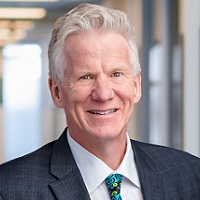 By Nick van Terheyden aka Dr Nick, Principal, ECG Management Consulting
By Nick van Terheyden aka Dr Nick, Principal, ECG Management Consulting
Twitter: @drnic1
Host of Healthcare Upside Down – #HCupsidedown
For much of the United States, the Thanksgiving holiday is an occasion to gather with loved ones, express gratitude, eat a big meal, and watch football.
But for radiologists and anyone working in that sector, Thanksgiving often finds them away from home attending one of the largest radiology gatherings in the world—the Radiological Society of North America (RSNA). It occurs in Chicago at the same time every year—immediately following Thanksgiving, putting a strain on flights, hotels, and infrastructure.
Episode NOW on Demand
RSNA is known throughout the world as the place to get the latest and greatest in imaging tech. The halls at McCormick center are lit up with amazing displays of innovation and technical progress as vendors show off their latest cutting-edge tools.
Like all of these types of events, it is full of glitz and glamour, designed to attract interest and attention. The progress is amazing, but the technology can come with some eye-watering prices.
The pandemic affected RSNA in a couple of ways. It limited the event during the peaks of the public health emergency, but attendance has since recovered. However, COVID-19 also trained a spotlight on the fundamental inequities in our healthcare system. And some attendees are questioning the value of these advancements and the corresponding investment. This is especially true for those coming to this event from poorer communities with limited resources.
Count Richard Duszak, MD, among those who’ve begun to see RSNA through a different lens. On this episode Dr. Duszak describes a career that has taken him from a world-renowned academic medical center to a radiology department in one of the poorest regions of the country—and how that’s changed his perspective on access to life-saving care. Here are a few excerpts.
Shifting priorities.
“Before coming here, I spent the last nine years at Emory University, one of the biggest radiology departments in the country—lots of high tech. Now I’m chair of the department at the only academic medical center safety net hospital in the poorest state in the country, the one with the shortest life expectancy. So when I was at RSNA last year, I was reflecting on how my perspectives of that meeting, what I was looking for, and what I was prioritizing have changed over time. At a high-powered academic place like Emory, [we had the latest technology]. Now I’m in a department where our backlog to get in for things like PET/CT is about four weeks. We are very capital-constrained.”
The cost of saving lives.
“The people at RSNA, like a lot of cutting-edge meetings, are always talking about pushing the envelope. ‘Let’s take a scanner that’s got 92% sensitivity, and let’s push it to 94%. Oh, this is so much better.’ What’s the price? ‘About $3 million, but aren’t those extra lives worth it?’ Now $3 million is a huge ticket for our center. If I could get just three plain old scanners for $1 million each, there would be so many Mississippians who don’t have access to imaging that I’d be able to serve. So my perspective was very different than any time I’ve been at that meeting. It was really my wake-up call from the point of view of healthcare inequities and disparities, and I need to figure out how to be part of the solution, rather than part of the problem.”
When technology limits access.
“I think we need to pivot our perspectives. Historically the question has been, ‘can we do this?’ and the reality is ‘sure, we can do it—we can increase the speed of our scanners or computer processing or whatever.’ But I think we need to have some really hard conversations about whether we should we be doing these things. What is the best use of the resources that are out there? I’m not anti-technology or anti-progress. But I think this has got to be balanced and thoughtful, because in a resource-constrained world, a lot of this is a zero-sum game. To improve the quality of the scanner that physicians with resources can get comes at the cost of other physicians not being able to get to it. What is good enough?”
This article was originally published on the ECG Management Consulting blog and is republished here with permission.
About the Show
The US spends more on healthcare per capita than any other country on the planet. So why don’t we have superior outcomes? Why haven’t the principles of capitalism prevailed? And why do American consumers have so much trouble accessing and paying for healthcare? Dive into these and other issues on Healthcare Upside/Down with ECG principal Dr. Nick van Terheyden and guest panelists as they discuss the upsides and downsides of healthcare in the US, and how to make the system work for everyone.
Tune in weekdays at 9am, 5pm, and 1am ET.
Join the conversation on Twitter at #HCupsidedown.
